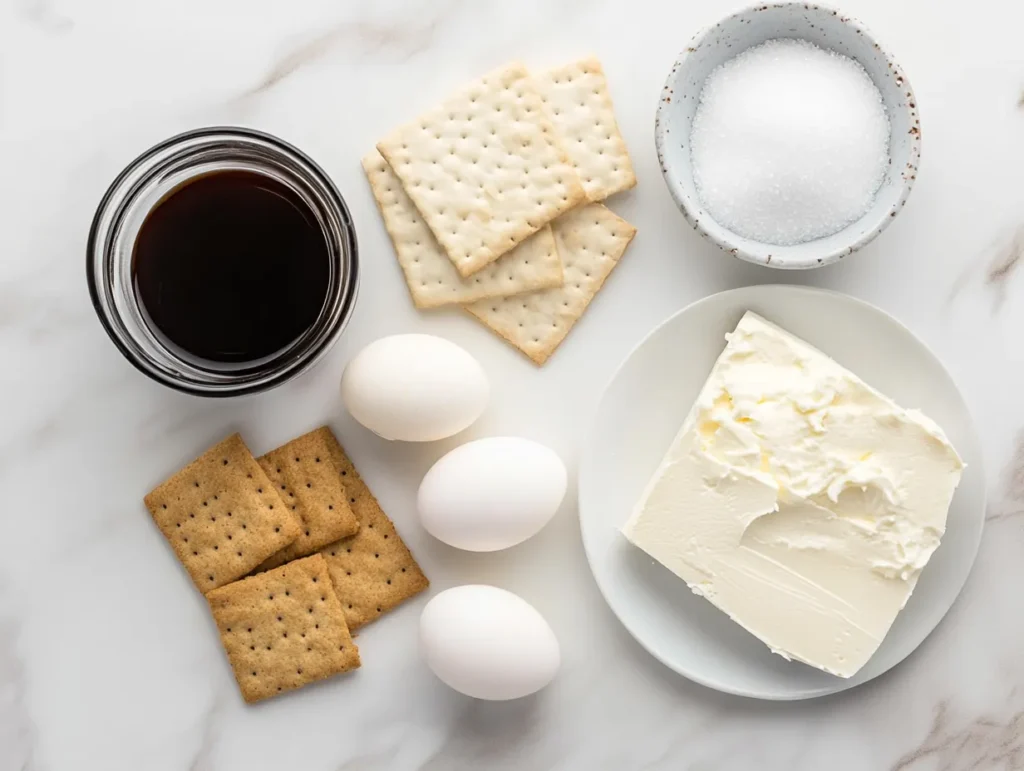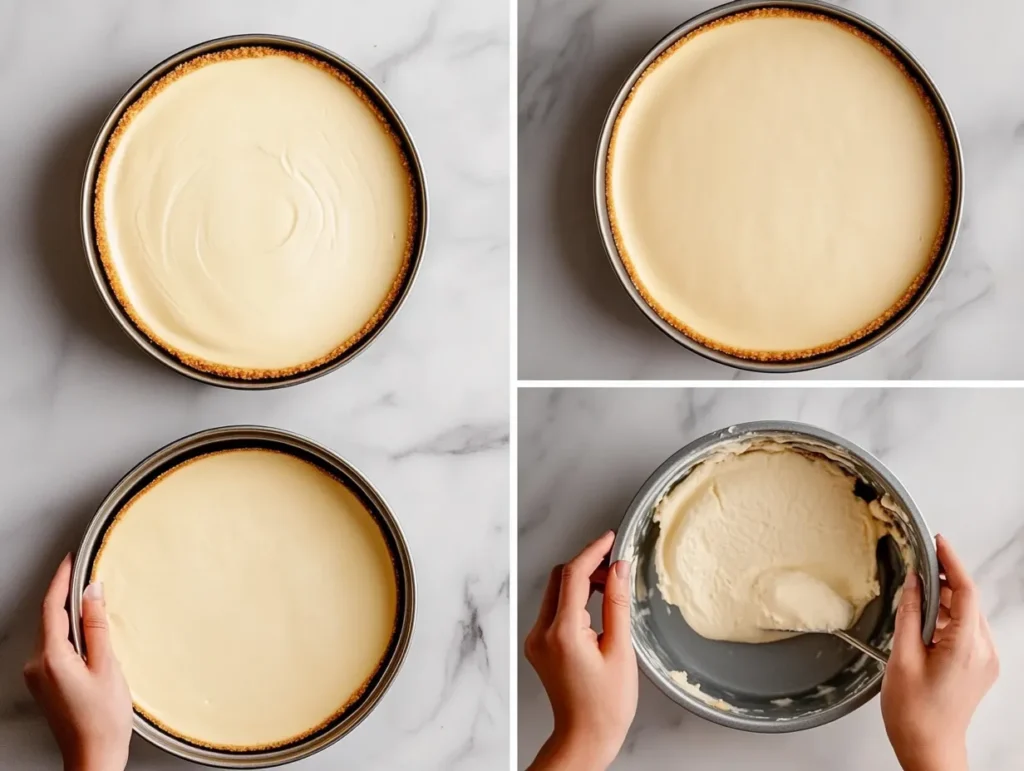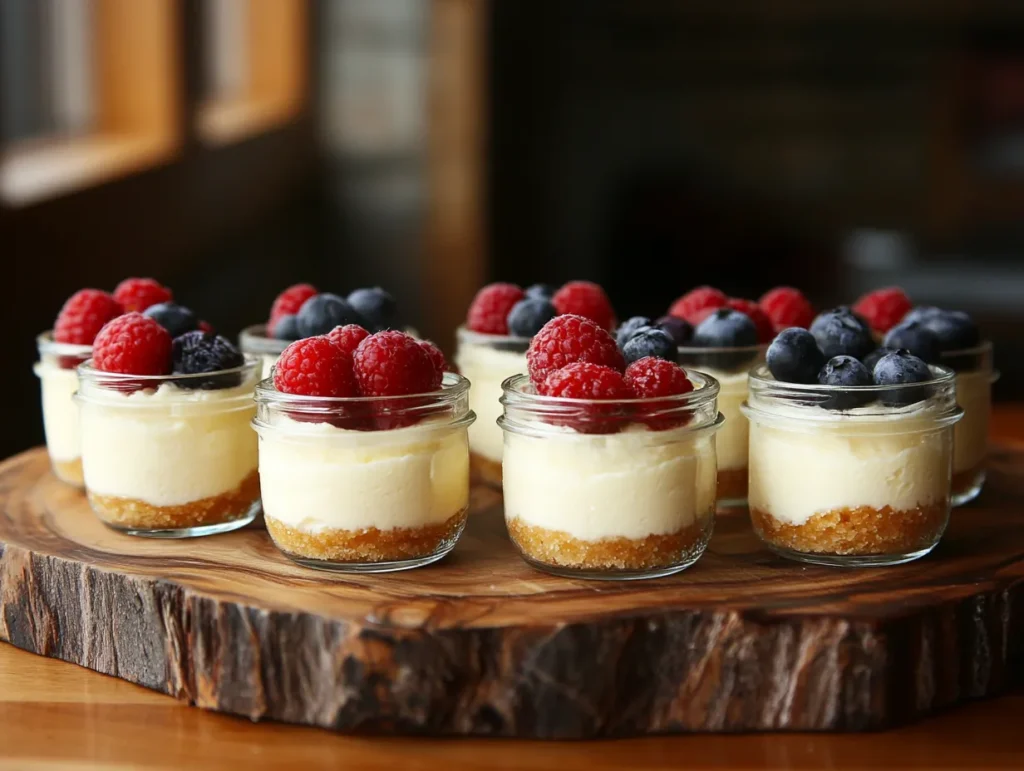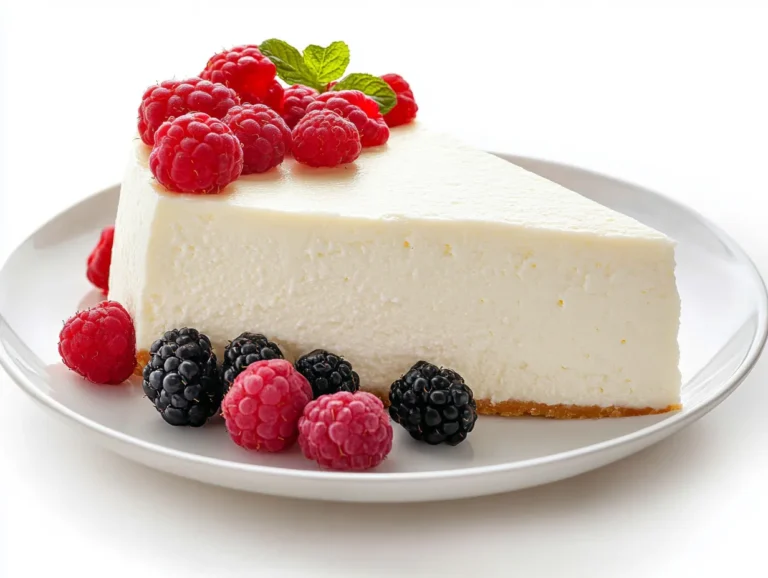There’s just something magical about a rich, creamy, Philadelphia cheesecake recipe. Whether you’re a dessert fanatic or just someone who appreciates a classic, this timeless treat has something for everyone. In this ultimate guide, we’ll explore everything you need to know to whip up the perfect cheesecake—using Philadelphia cream cheese, of course.
From understanding what sets this cheesecake apart to breaking down ingredients, baking tips, and tasty variations, you’re in for a delicious journey. We’ll also share answers to common questions, pro-level baking tricks, and fun ways to make your cheesecake your own. So, grab your apron—it’s time to make dessert the star of the show!
What is a Philadelphia Cheesecake?
A Brief History of Philadelphia Cream Cheese
Believe it or not, Philadelphia cream cheese doesn’t actually hail from Philly. It was created in New York back in 1872, but the name “Philadelphia” was chosen to evoke a sense of premium quality—since the city was known for its rich dairy products. Fast-forward to today, and Philadelphia cream cheese cheesecake recipes are some of the most beloved across kitchens worldwide.
Creamy, smooth, and just the right amount of sweet, this cheesecake style became iconic thanks to its simplicity and rich texture. Unlike fluffier alternatives or super-dense New York styles, a Philadelphia cheesecake recipe typically focuses on letting the silky cream cheese shine.
How Philadelphia Cheesecake Differs from New York Style
So, what sets the Philadelphia cheesecake apart from its New York cousin? It’s all in the texture and ingredients.
While both use cream cheese as the base, the New York-style cheesecake often includes sour cream or heavy cream to create that ultra-thick texture. A Philadelphia cream cheese cheesecake recipe, on the other hand, usually skips those extras. The result? A lighter, smoother, and more melt-in-your-mouth kind of indulgence.
Also, there’s usually no need for a water bath when making a classic Philadelphia cheesecake—a bonus for home bakers looking for ease without sacrificing flavor.
Ingredients You’ll Need for the Perfect Philadelphia Cheesecake
Must-Have Ingredients for a Classic Philadelphia Cheesecake Recipe
Making the perfect Philadelphia cheesecake recipe starts with quality ingredients. The best cheesecakes are the ones that keep it simple, creamy, and satisfying. Here’s what you’ll need:
- Philadelphia Cream Cheese: Naturally, this is the star. Use full-fat blocks for that rich, smooth texture. Avoid whipped or low-fat versions if you want that classic creamy finish.
- Granulated Sugar: Just enough to sweeten the cheesecake without overpowering the tang of the cream cheese.
- Large Eggs: These help bind everything and give your cheesecake its silky consistency.
- Pure Vanilla Extract: A touch of vanilla rounds out the flavor beautifully.
- Graham Crackers: Crushed for the crust—add melted butter and sugar, and you’re golden.
If you love a bit of citrus zing, a dash of lemon juice or zest goes a long way. Want it extra rich? Some bakers add sour cream, but in a classic Philadelphia cheesecake, it’s often left out for a smoother bite.
For those looking to explore fruit toppings, creamy swirls, or chocolate layers, you can draw inspiration from other desserts like this banana pudding crunch cheesecake for fun ideas!
Optional Ingredients and Custom Add-ins
Let’s spice things up a little. Want to go bold? You can add:
- Pumpkin puree and spices for a fall twist
- Fresh berries or fruit compote
- Melted chocolate swirls or Oreo chunks
These additions are optional, but they’re the ticket to personalizing your cheesecake recipe Philadelphia style. Just remember—don’t overload it. Keep that cream cheese magic front and center!
Step-by-Step Instructions for the Classic Philadelphia Cheesecake Recipe

Step 1: Make the Graham Cracker Crust
Alright, let’s get to baking. First things first—the crust. A Philadelphia cream cheese cheesecake recipe usually begins with a simple graham cracker base. Here’s how to make it:
- Crush about 1½ cups of graham crackers into fine crumbs.
- Stir in ¼ cup of granulated sugar.
- Mix with 5 tablespoons of melted butter.
- Press the mixture evenly into the bottom of a springform pan.
- Bake it at 325°F (160°C) for about 8–10 minutes. Let it cool.
Boom. That’s your base layer. Crisp, buttery, and the perfect support for your creamy filling.
Step 2: Blend and Pour the Cheesecake Filling
Now for the showstopper: the cheesecake filling. Make sure your Philadelphia cream cheese is at room temperature—it blends easier and smoother.
- Beat 4 (8-ounce) blocks of Philadelphia cream cheese until smooth.
- Add 1 cup of sugar and continue beating until fluffy.
- Blend in 1 teaspoon of vanilla extract.
- Add 4 eggs, one at a time, mixing just until blended. Don’t overmix!
Pour the batter over your crust and smooth the top with a spatula.
Step 3: Bake to Creamy Perfection
Bake the cheesecake in a preheated oven at 325°F (160°C) for about 55 minutes. You’ll know it’s ready when the center jiggles just slightly.
Want to skip the water bath? No problem! That’s the beauty of a Philadelphia cheesecake recipe. However, placing a pan of hot water on the rack below can help keep the oven moist and prevent cracks.
Once baked, turn off the oven, crack the door, and let the cheesecake sit for an hour. This slow cool-down is key.
Step 4: Chill and Serve
After cooling, refrigerate the cheesecake for at least 4 hours—overnight is best. Top it with berries, whipped cream, or leave it plain. Either way, you’re guaranteed creamy, dreamy perfection.
Looking for more no-fuss treats? You might enjoy this tiramisu cheesecake twist if you’re feeling a little fancy.
Pro Tips to Prevent Cracks and Achieve the Creamiest Texture
Why Philadelphia Cheesecake Cracks and How to Avoid It
Let’s be real—seeing cracks on top of your beautiful Philadelphia cheesecake recipe can be a heartbreaker. But don’t worry, it’s totally fixable! Cracks usually happen when the batter is overmixed or the cheesecake cools too quickly.
To dodge those cracks:
- Mix gently after adding eggs. Overmixing introduces air, which expands during baking and contracts later—causing those dreaded cracks.
- Avoid opening the oven door while baking. Sudden temperature changes are a cheesecake’s worst enemy.
- Use a water pan (not a full bath) to keep humidity in the oven. This helps the cake bake gently.
Oh, and don’t skip that slow cool-down inside the oven with the door cracked. It makes a world of difference!
Tricks for the Creamiest Philadelphia Cheesecake Texture
Want your Philadelphia cheesecake recipe to be next-level smooth? Try these tips:
- Let your cream cheese come to room temperature before mixing—it blends much better.
- Strain your batter before pouring it into the crust if you want an ultra-smooth finish.
- Refrigerate overnight for maximum creaminess—yes, it’s worth the wait!
For more delicious dessert inspiration, don’t miss this churro cheesecake recipe for a cinnamon-sugar twist on the classic.
Variations of the Philadelphia Cheesecake Recipe

Fun Variations on the Classic Philadelphia Cheesecake Recipe
The classic Philadelphia cheesecake recipe is timeless, but who says you can’t get creative with it? You can take that creamy base and transform it into something completely new—and delicious.
Let’s start with some fun takes:
- No-Bake Philadelphia Cheesecake: Skip the oven! Just chill the filling over a graham cracker crust. It’s perfect for summer parties.
- Mini Cheesecakes: Use cupcake tins with liners and fill them with batter. Bake for 18–20 minutes and cool. Instant portion control—well, sort of.
- Swirl Cheesecake: Add fruit preserves, Nutella, or even pumpkin puree to your batter. Use a knife to create beautiful swirls.
If you’re a fan of chocolate, try folding in crushed cookies or topping with a chocolate ganache after chilling.
Holiday and Seasonal Cheesecake Ideas
Holidays are the best time to flex your dessert game. Here are some must-try ideas that start with the base cheesecake recipe Philadelphia fans love:
- Pumpkin Cheesecake: Add canned pumpkin and warm spices like cinnamon, nutmeg, and clove to the batter. A holiday staple!
- Berry-Topped Cheesecake: Blueberries, strawberries, or a mix of fresh berries with a glaze are always a win.
- Oreo Cheesecake: Crushed Oreos in both the crust and the batter? Say no more.
Want something tropical? Pineapple or mango puree makes a fruity twist that feels like a summer vacation. You can even try a combo—like mango on top of a coconut graham crust.
If you enjoy bold, playful flavors, the banana pudding crunch cheesecake is a must-see—it’s a crowd-pleaser that blends nostalgic flavor with creamy cheesecake perfection.
Serving Suggestions and Storage Tips

How to Slice and Serve a Philadelphia Cheesecake Recipe Neatly
After you’ve put your heart into the perfect Philadelphia cheesecake recipe, presentation is key. So how do you slice it without ruining that smooth top?
Here’s the trick—use a hot knife. Simply dip a sharp knife into hot water, wipe it dry, and make a clean cut. Repeat between slices. You’ll be amazed at how neat it looks!
For serving, a chilled plate keeps each slice firm. Want to get fancy? Garnish with:
- Fresh berries
- Whipped cream
- Chocolate shavings
- Mint leaves
If you’re entertaining, serve smaller slices with dessert wine or coffee—it adds an elegant touch to any table.
Refrigerating and Freezing Cheesecake the Right Way
Now, let’s talk storage. Once you’ve mastered the philadelphia cheesecake recipe, you’ll want to enjoy it over a few days—or save some for later!
- Refrigerate: Store in an airtight container or wrap tightly in plastic wrap. It’ll stay fresh for up to 5 days.
- Freeze: Want to make it ahead? Wrap slices individually with cling film and foil, then freeze for up to 2 months. To serve, thaw overnight in the fridge.
Whatever you do, avoid leaving it out too long. Cheesecake is happiest cold—and honestly, that’s when it tastes best!
Common Mistakes to Avoid When Making Philadelphia Cheesecake

Avoid Overmixing the Batter in Your Philadelphia Cheesecake Recipe
One of the biggest missteps when making a Philadelphia cheesecake recipe? Overmixing the batter.
It’s tempting to keep the mixer going, but too much air makes the cheesecake puff in the oven and crack as it cools. Yikes! Instead, mix gently and only as much as needed to blend ingredients.
After adding the eggs, beat just until combined. Trust the process—less is definitely more here.
Don’t Rush or Eyeball the Steps
Patience pays off with cheesecake. Rushing the chill time is another mistake many bakers make. Remember, this dessert isn’t fast food—it needs hours in the fridge to set properly.
And don’t just “eyeball” ingredients. Precision matters, especially with the crust and filling. Always measure—this ensures a consistent, creamy texture every time.
Another common slip-up? Baking at too high a temperature. Stick with low and slow. Your cheesecake will thank you.
Craving more baking tips? Try exploring other dessert favorites like churro cheesecake for creative ideas that still keep it creamy and classic.
FAQs – People Also Ask
What is the difference between New York and Philadelphia cheesecake?
That’s a common question—and the difference is all in the texture and ingredients. A Philadelphia cheesecake recipe keeps it simple with just cream cheese, eggs, sugar, and vanilla. It’s creamy and light, without the added density of sour cream or heavy cream that’s typical in New York-style cheesecakes.
New York cheesecake is richer and denser, thanks to extra ingredients and a long bake in a water bath. Meanwhile, Philadelphia-style is all about that silky smooth, melt-in-your-mouth feel—without all the fuss.
Can I make a Philadelphia cheesecake recipe without baking?
Absolutely! No-bake versions of the Philadelphia cheesecake recipe are super popular—especially in warmer months. You’ll just need to mix softened cream cheese with sugar and whipped topping, pour it over a pre-made graham cracker crust, and chill for a few hours. It’s light, quick, and still delicious.
Why is my Philadelphia cheesecake too runny?
A runny cheesecake usually comes down to one of two issues: underbaking or skipping the chill time. A properly baked Philadelphia cheesecake recipe should jiggle slightly in the center but firm up completely after chilling. Give it at least 4 hours in the fridge—or better yet, overnight.
How long should a Philadelphia cheesecake sit before serving?
Great question! Once your cheesecake is fully chilled, let it sit out for about 15–20 minutes before slicing. This takes off the chill just enough to enhance the flavor while keeping each bite firm and creamy. Trust us—your guests will notice the difference.
Final Thoughts and Bonus Tips from Cheesecake Experts

Bonus Tips for Your Best Philadelphia Cheesecake Recipe Ever
So, you’ve got the basics down. Now what? Here are a few expert-level tips to take your Philadelphia cheesecake recipe from great to unforgettable.
- Always use full-fat Philadelphia cream cheese. It makes all the difference in flavor and texture.
- Want cleaner slices? Wipe your knife between each cut—and keep it warm.
- If you’re feeling fancy, layer your cheesecake with thin fruit preserves or lemon curd between two layers of filling.
Also, don’t be afraid to get creative! Cheesecake is surprisingly forgiving, and once you’ve nailed the classic, it’s fun to try new flavors and textures. Whether it’s a no-bake twist or something indulgent like a banana pudding crunch cheesecake, there’s a world of deliciousness waiting.
Print
Philadelphia Cheesecake Recipe
- Total Time: 1 hour 15 minutes
- Yield: 12 servings
- Diet: Vegetarian
Description
This Philadelphia Cheesecake Recipe delivers a rich, creamy, and classic dessert using Philadelphia cream cheese. With simple ingredients and easy steps, it’s the perfect treat for any occasion—plus, it comes with helpful tips, variations, and storage advice.
Ingredients
-
4 (8 oz) blocks Philadelphia cream cheese, softened
-
1 cup granulated sugar
-
1 teaspoon vanilla extract
-
4 large eggs
-
1½ cups graham cracker crumbs
-
5 tablespoons melted butter
-
¼ cup sugar (for crust)
-
Optional toppings: fresh berries, whipped cream, chocolate sauce
Instructions
-
Preheat oven to 325°F (160°C).
-
Combine graham cracker crumbs, melted butter, and sugar. Press into the bottom of a springform pan and bake for 8–10 minutes.
-
In a large bowl, beat cream cheese until smooth. Add sugar and vanilla; mix well.
-
Add eggs one at a time, mixing gently after each.
-
Pour the filling into the cooled crust. Smooth the top.
-
Bake for 55 minutes or until the center is almost set.
-
Turn off oven, crack the door, and let the cheesecake cool for 1 hour.
-
Refrigerate for at least 4 hours or overnight before serving.
Notes
- Don’t overmix the batter to avoid cracks
- A water pan in the oven can prevent surface cracking
- Chilling overnight gives the best texture
- Try variations like no-bake, mini, or fruit-topped versions
- Prep Time: 20 minutes
- Cook Time: 55 minutes
- Category: Dessert
- Method: Baking
- Cuisine: American
Nutrition
- Calories: 320 kcal
- Sugar: 20 g
- Sodium: 220 mg
- Fat: 24 g
- Saturated Fat: 14 g
- Unsaturated Fat: 7 g
- Trans Fat: 0 g
- Carbohydrates: 22 g
- Protein: 6 g
- Cholesterol: 95 mg
Keywords: philadelphia cheesecake recipe, philadelphia cream cheese cheesecake recipe, cheesecake recipe philadelphia, creamy cheesecake, easy dessert

